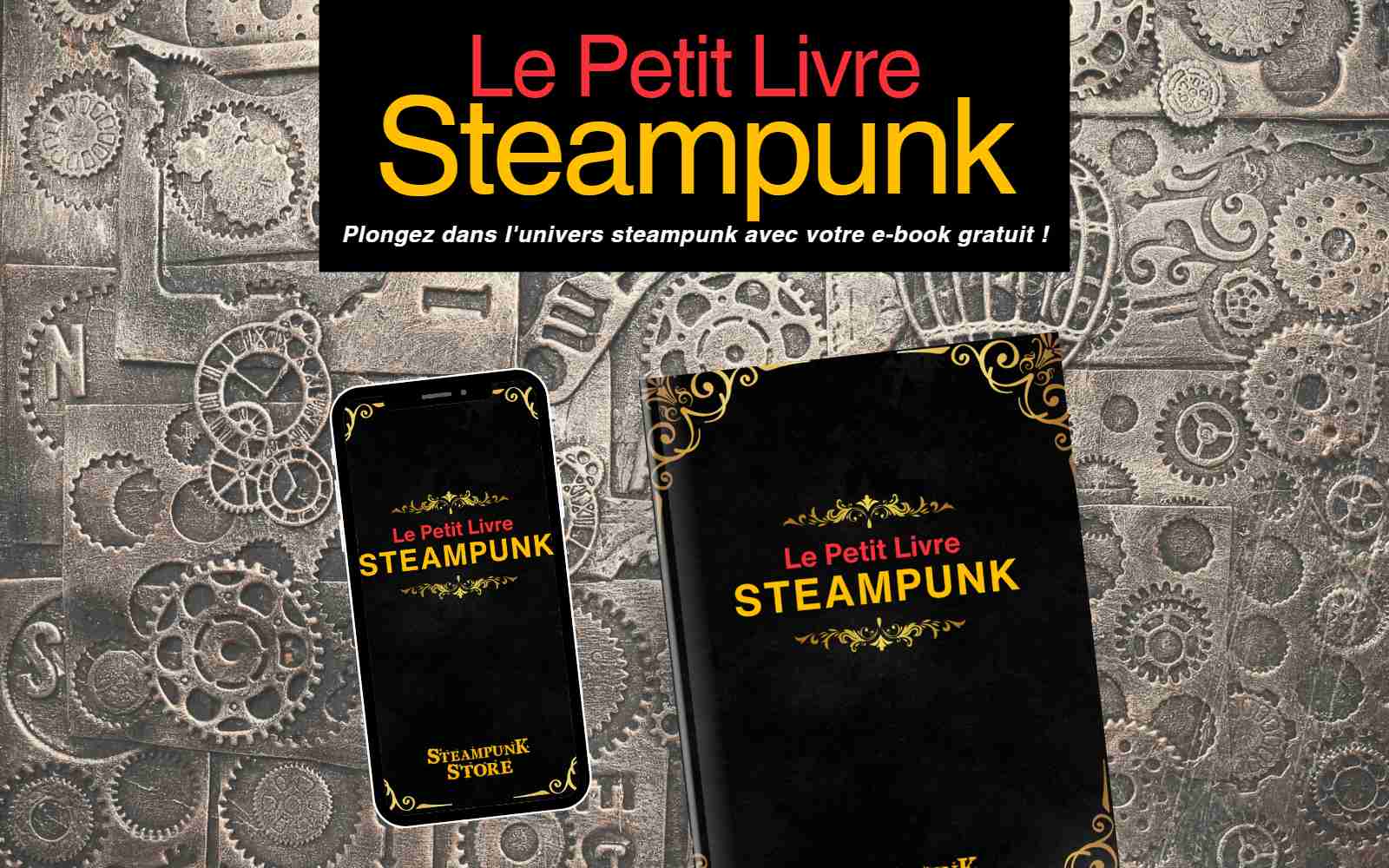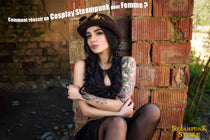
Welcome, distinguished explorers of technological imagination, to this epistemological investigation dedicated to the universes of diesel and steam! Why, indeed, do certain enlightened minds consider dieselpunk to constitute the most significant derivative of our ancestral steampunk movement?
When one operates within the analytical framework of alternative styles, this question constitutes a recurring mechanism in our aesthetic discourse. Like an experienced horologist, we have learned to decompose instantly the influences and sub-genres that intermingle within this complex cultural machinery. How often, within our laboratory of stylistic analysis, do we interrogate ourselves regarding the categorical belonging of any given object? This constant questioning has transformed us, dear readers, into accidental authorities on what pertains, or does not pertain, to the dieselpunk universe.

Within our team of passionate enthusiasts, we have practiced cosplay and venerated steampunk for decades. Truth be told, we were already integrating dieselpunk elements into our creations well before this term crystallized within the cultural vocabulary of the 2000s. We observed the emergence of multiple appellations designed to qualify this nascent aesthetic, like a linguistic mechanism in perpetual evolution.
Dieselpunk: Definition and Conceptual Genealogy
Definition of Dieselpunk
Dieselpunk constitutes an aesthetic and narrative genre that harmoniously marries the diesel technology of the interwar period through the 1950s with retrofuturistic imagination and postmodern sensibility. A cousin germane to steampunk, it transposes the mechanical elegance of steam toward the tumultuous era of petroleum and electricity, thereby creating a universe where technological innovation dialogues with the shadows of contemporary history.
According to contemporary encyclopedic archives, the term "dieselpunk" inscribes itself within the semantic lineage of the cyberpunk of the 1980s, that visionary science fiction of William Gibson. The prefix represents this pivotal period—from the interwar years through the 1950s—when diesel engines embodied the technological avant-garde of Western civilization. The suffix "-punk," for its part, crystallizes the counter-cultural nature of the genre, its resolute opposition to contemporary dominant aesthetics.
Ludic Genesis: Emergence Through Role-Playing Games
The terminological birth certificate was accomplished by Lewis Pollack upon publication of his role-playing game "Children of the Sun" in 2001, a veritable temporal gaming machine. This creation transposes the steampunk universe from the Victorian era toward the troubled period of world wars. A dark cosmos dominated by war, military forces, their codes and militaristic iconography—a universe diametrically opposed to the world of vaporous advent, where petroleum and electricity supplant the steam engines.

An emblematic phrase summarizes this aesthetic philosophy for initiates: "Because steam just wasn't dirty enough." This maxim reveals the very essence of dieselpunk: a celebration of the retro-futurism of the 1920s-1940s, demanding that we imagine and reinterpret tomorrow's future through yesterday's tainted prism.
Visual Aesthetics: Art Deco Meets Science Fiction
The dieselpunk aesthetic harmoniously incorporates elements of Art Deco, film noir, Prohibition, gangsters, and the Great War, combined with science fiction, fantasy, alternative history, and future technology to create a unique and distinct genre.
Dear enthusiasts, after years of research and meticulous observation, I have discovered that dieselpunk remains what we, as a community of initiates, collectively decide it to be—provided it faithfully reflects the retrofuturistic elements of the 1920s through the 1950s. This definitional flexibility constitutes one of its major creative strengths.
Analytical Typology: The Two Faces of Dieselpunk
Within my personal taxonomy, fruit of years of observation, I distinguish two fundamental expressions of this aesthetic, functioning like two faces of the same mechanical coin:
| Type of Dieselpunk | Characteristics | Sartorial Approach | Philosophy |
|---|---|---|---|
| Natural Dieselpunk | Rigorous historical authenticity | Authentic vintage clothing or faithful reproductions | Exact reconstitution of the era |
| Retrofuturistic Dieselpunk | Speculative innovation | Original creations inspired by the period | Reinvention of yesterday's future |
The first current privileges historical authenticity: its adherents wear British military uniforms or faithful reproductions of the era. The second, more creative, draws inspiration from what constituted the future during that period to produce science-fictional elements integrated into contemporary daily life.
Sky Captain: Cinematic Paradigm
Sky Captain and the World of Tomorrow remains the perfect exemplar of successful cinematic dieselpunk, a veritable retrofuturistic dream machine.
Are You Dieselpunk? A Self-Assessment Test
Allow me to propose a questionnaire for aesthetic introspection, dear readers. These indices might reveal your belonging to the dieselpunk movement:
- Do you appreciate the safari and colonial look that you naturally integrate into your 21st-century daily wardrobe?
- Are you fascinated by military aesthetics—uniforms, machines, and World War II accessories—which you interweave into your contemporary existence?
- Do you privilege period costumes and dresses for your cultural outings, accompanied by leather, caps, and appropriate makeup?
- Do you attempt to recreate your daily environment as if the 1920s-1940s style constituted the aesthetic norm?
- Have you ever worn a vintage fedora or leather jacket with your modern clothes, wondering if others share this passion?
If these interrogations resonate within you, dear enthusiasts, you may belong to this dieselpunk brotherhood that doesn't always admit itself!
Steampunk, Dieselpunk, Cyberpunk: A Contestatory Trinity

Like its aesthetic cousins, dieselpunk transcends simple stylistic or decorative categorization. The "punk" aspect of dieselpunk constitutes an act of passive aggression against the modern establishment that dictates sartorial choices to everyone. More precisely, we oppose those self-proclaimed instances that compose ridiculous articles about ephemeral trends, those innumerable publications destined for the standardized consumer.

Dieselpunk particularly contests those dictates of feminine fashion that decree that every ancient element would be obsolete while every novelty would be beneficial—and that what seems appropriate today will become inadequate in just a few weeks, like a mechanism of planned obsolescence applied to personal aesthetics.
Declaration of Aesthetic War

We openly display our opposition to the self-proclaimed authority of a fashion industry that demands we discard all clothing acquired the previous season to spend a fortune on current trends, before recommencing this infernal cycle at each seasonal change. We refuse to prostrate ourselves before the cult of the fashion runway!
Dieselpunk constitutes a declaration of war against the establishment that demands conformity, thereby perfectly joining our steampunk movement. It's a vigorous metaphorical punch to the face of those who demand specific dress and genuflection before the altar of hyper-consumption. We totally repudiate those aspects of modern society that diminish those who understand that "new" doesn't automatically mean "better."
Individualism as Community Mechanism
Being dieselpunk also means celebrating the authentic individualism of the aforementioned era—not to live as hermits, but to enrich our community further. The more we fortify ourselves as individual dieselpunks, the more our collective community prospers, like a mechanism where each perfected gear improves the entire machine.
One of the most fascinating aspects concerning dieselpunk's definition resides in the fact that this debate constitutes one of the most popular activities among dieselpunks themselves! My own definition aims to be deliberately inclusive, allowing an accessible approach to avoid excluding anyone from our dieselpunk, steampunk, and cyberpunk communities. We ultimately form the same family of spirits nostalgic for the past and its alternative style, fighting to preserve our personal authenticity.
Evolutionary Perspectives: The Movement's Future
One certainty remains, dear enthusiasts: dieselpunk will persist and develop as artists, writers, makers, and creators from all horizons incorporate this era's aesthetic into their projects and productions. This creative dynamic functions like a self-maintained mechanism of cultural innovation.

The dialogue between steampunk and dieselpunk doesn't constitute opposition, but rather mechanical complementarity. Where steampunk explores the infinite possibilities of steam and Victorian gears, dieselpunk investigates the darker territories of petroleum and military steel. Together, they form a retrofuturistic symphony of unprecedented richness.
Dear readers, steampunks and dieselpunks alike, the important thing is not to choose sides, but to understand that these two aesthetics participate in the same rebellion against contemporary standardization. Whether you're attracted to the vaporized elegance of the Victorian era or the mechanical harshness of the interwar period, you participate in this magnificent cultural machine that restores nobility to creative individualism.
Explore our collections for steampunk men and steampunk women, and let your creativity flourish within the meanders of these complementary retrofuturistic aesthetics. For remember, within the universe of these alternative movements, we don't simply wear clothing: we display manifestos of mechanical beauty and creative freedom!
Sources and References
- Pollack, Lewis. "Children of the Sun" - Role-playing game (2001)
- Gibson, William. "Neuromancer" - Foundational cyberpunk literature
- European interwar cultural archives
- Documentation on contemporary alternative aesthetic movements
- Comparative studies of punk and retrofuturistic subcultures
Eugénie Vaporette
Curator-consultant in steampunk and dieselpunk aesthetics
Graduate in Victorian technology history









